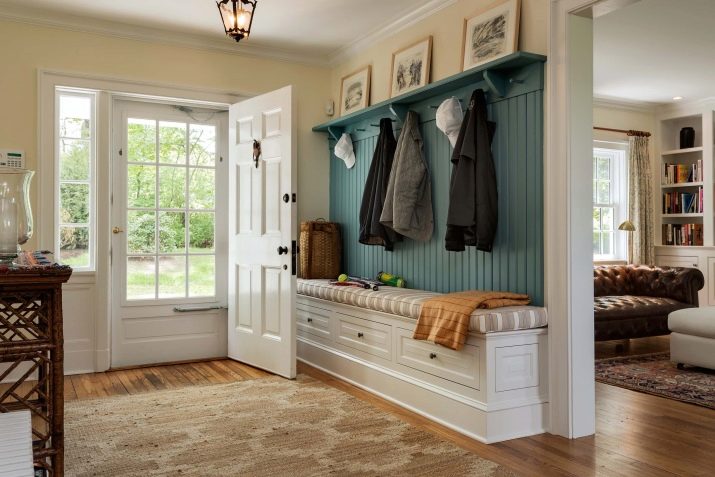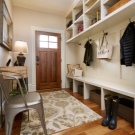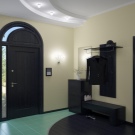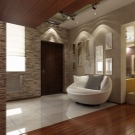Many homeowners believe that the entrance hall is an exclusively functional area in which it makes no sense to invest extra energy and money. But it is precisely here that guests find themselves when they come to the house, and it is in this room that they form their first impression of its owners.
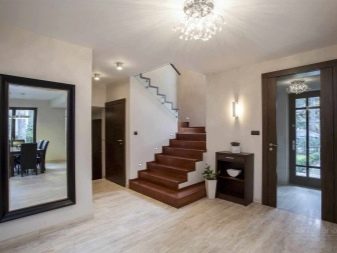
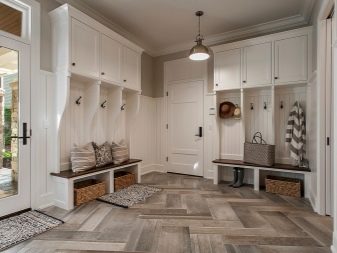
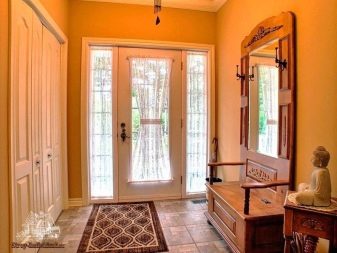

Basic design principles
When planning repairs in the hallway of a private house, think in advance about all the subtleties of its design - the entrance area should not only be functional, but also aesthetically pleasing, everything should be as practical as possible - from surface finishing to furniture.
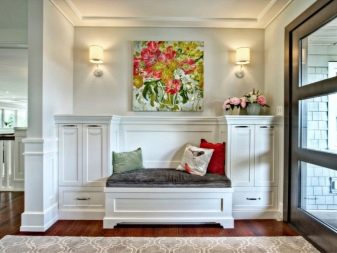
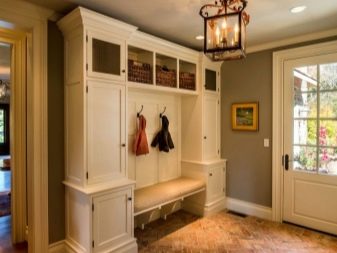
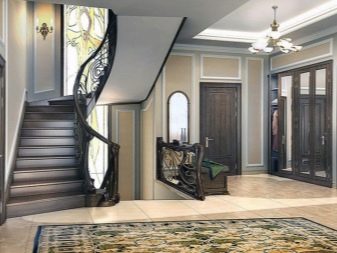
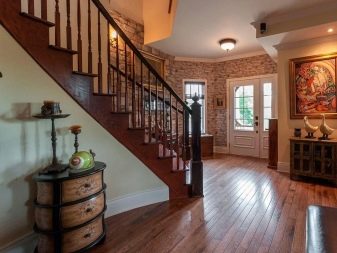
It's no secret that people enter the hallway of a summer house or private house almost from the street, here they take off dirty shoes, open wet umbrellas and put their bags on, and besides, cold air often penetrates here. That is why for decoration it is necessary to use practical moisture-resistant materials that are quickly cleaned, and under the influence of temperature fluctuations they do not deform and do not lose their technical and operational properties.
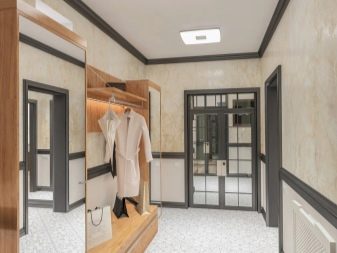
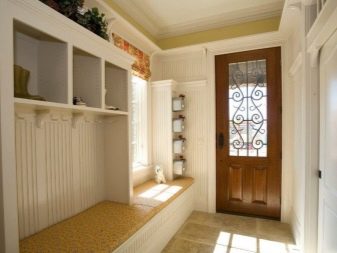
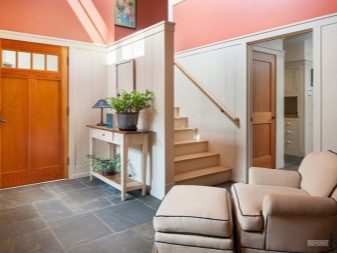
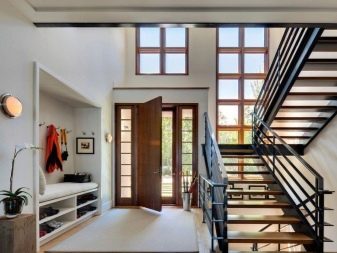
In modern mansions, hallways are made large, however in old-style buildings they are most often small, narrow and dark. You can adjust the dimensions with the help of a correctly selected shade of finishes and good lighting.
Decide in advance exactly how you will use the hallway - Do you plan to store only street clothes with shoes in it, or do you need a more capacious storage system, do you and your household need an ordinary bench for sitting, or do you plan to place a dressing table there. All these factors largely depend on the number of family members, their style, habits and the fullness of the rest of the premises in the house.
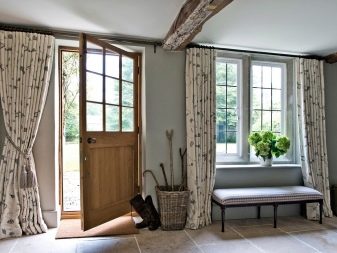
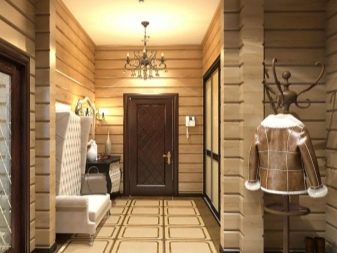
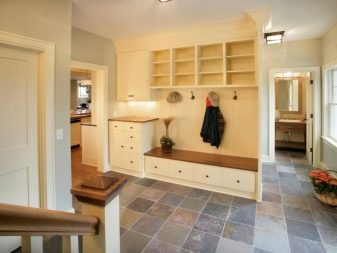
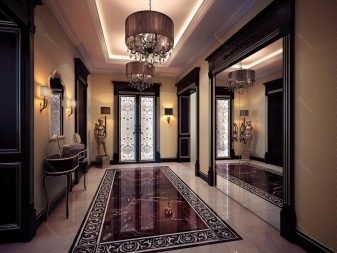
Finish
Walls
Any finishing should begin with the definition of the necessary facing materials. Walls in any house, especially in a private house, are exposed to dirt, as well as dust, moisture, wind and mechanical abrasion.When we take off our shoes, we lean against the walls, with raindrops falling on our clothes and umbrellas, which are not always clean, and if there are four-legged pets in the house, then after a walk in slushy weather the problem of washing the corridor will be even more urgent. That is why when selecting a facing material, first of all, they think about ways to clean it and restore the coating in case of damage and after severe pollution.

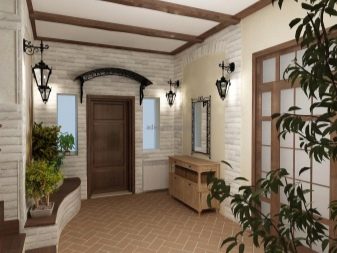
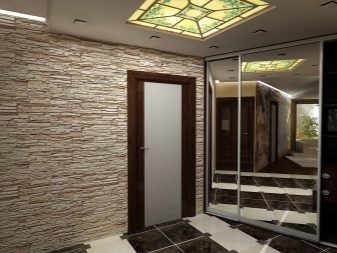
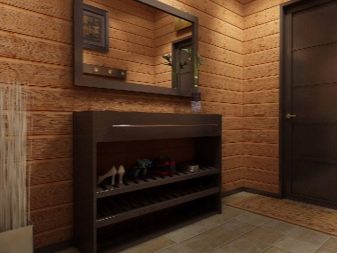
Do not make a choice in favor of expensive fabric and cheap paper wallpaper. In the hallway, only durable, dense and washable linens will be appropriate.
The following materials are among the most demanded in decoration.
- Vinyl wallpapers. The fundamental difference between coatings of this type from ordinary paper canvases is that they can be washed. In addition, they are slightly stronger, thicker, they are easy to stick on their own, while in stores they are presented in a fairly wide range at a very affordable cost.
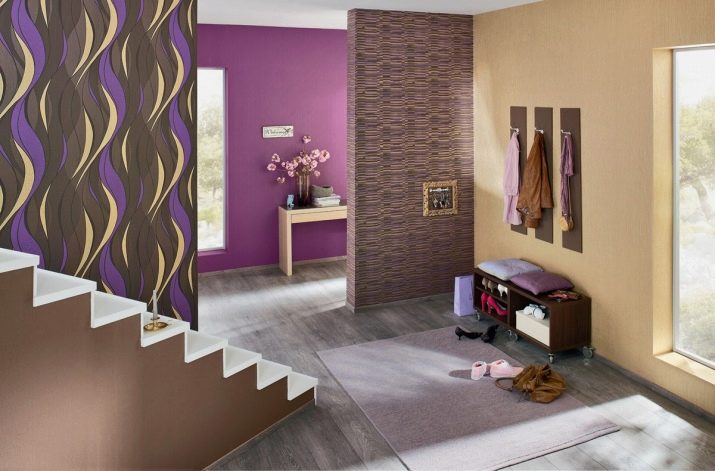
- Liquid wallpaper. With the help of such coatings, you can decorate any surface (with arches, curved niches, smooth bends and other decorative elements).

- Paint. The most budgetary way to transform the hallway, however, it requires a perfectly flat surface, which means that you will have to spend more effort, as well as time and money on preliminary plastering the walls or pasting them with wallpaper for painting.
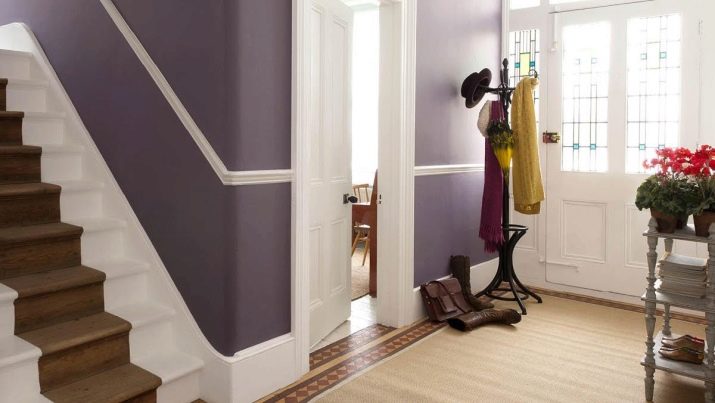
- Decorative plaster. The most practical and fairly durable way to design surfaces. The process of applying such materials is simple, the result does not need special care, and the color scheme of the material is quite wide.
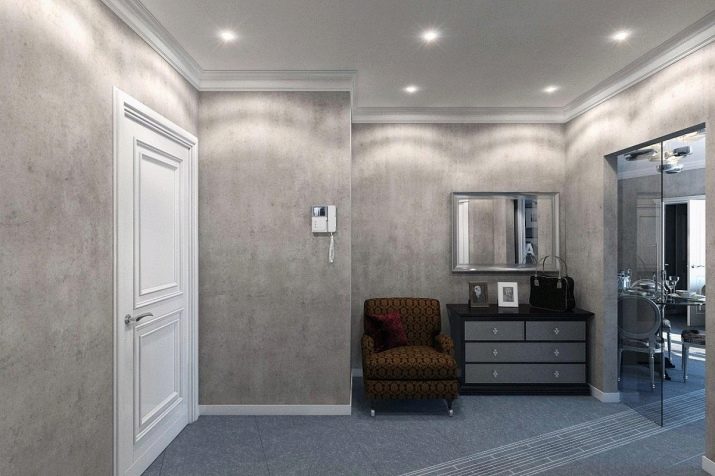
- PVC or MDF panels. A fairly reliable way to decorate walls in whole or in part in the shortest possible time. This is a cheap and sturdy material that you can install yourself.
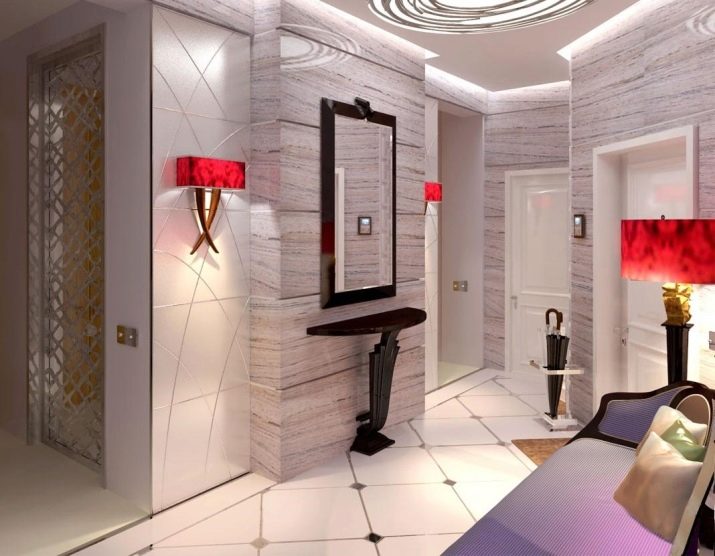
An important advantage of such products is high moisture resistance and ease of cleaning.
Floor
The load equal to that experienced by the floors in the hallway, they no longer experience in any other room at home. Here the surface is exposed to heels, luggage, bicycle wheels and strollers and rollers. And all this not to mention the water, dust and dirt that households bring from the street. That is why as a high-quality flooring, you need to choose the most resistant and practical materials that are easy to care for.
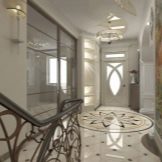
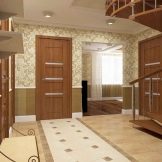
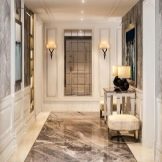
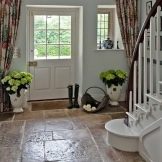
The following types of flooring comply with these requirements.
- Linoleum. One of the most common ways of decorating floors. This material is distinguished by affordability, ease of cleaning and durability. Nowadays, linoleum is produced in a variety of colors and textures, including those that imitate natural materials. However, keep in mind that linoleum is divided into three categories: household, semi-commercial and commercial. Each type of coating has a different degree of wear resistance.
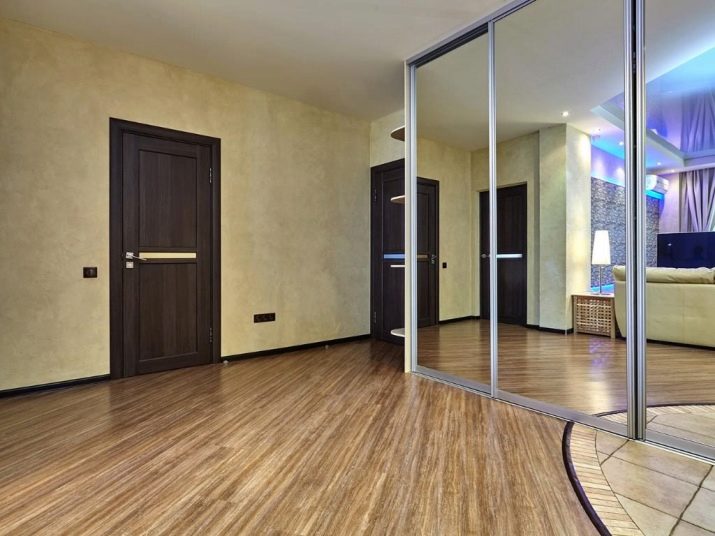
Household coating for corridors is not used, since it will not withstand the constant impact of pointed objects (heels and stilettos).
- Laminate. If you use this type of flooring, the choice must be made in favor of the most durable and moisture resistant materials. The laminate is particularly susceptible to moisture, therefore it is desirable to treat the joints at special hydrostatic grouts.
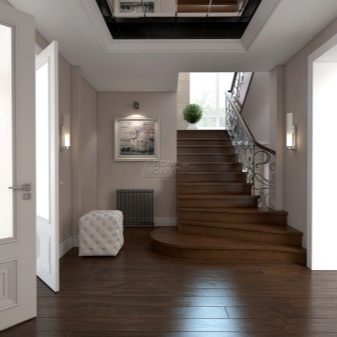
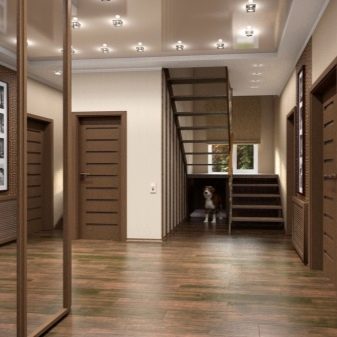
- Tile. It is considered a reliable and practical way to design the floor, and caring for this coating does not present any difficulties. Porcelain stoneware will be the highest quality option, it is characterized by durability and protection against slipping. The most reliable coating will be stone tiles, but the cost of such panels is high and not every homeowner can afford such floors in the hallway.
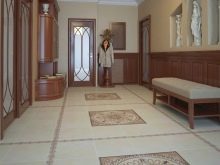
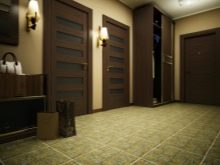
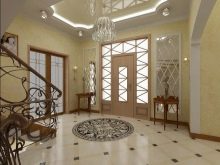
Ceiling
The ceiling lining in the corridor is not much different from the materials for any other rooms. Usually use one of the following options:
- stretch cloths;
- suspended structures;
- facing of overlappings.

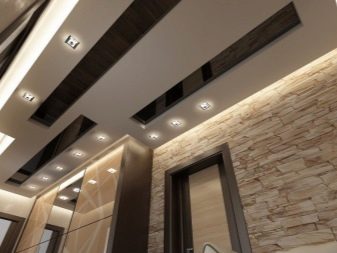
Stretch ceilings are perfectly aligned web, durable and easy to maintain. For the hallway, this option will be optimal, since there are no special aesthetic requirements for the ceilings in this room.
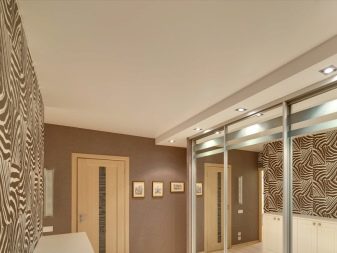
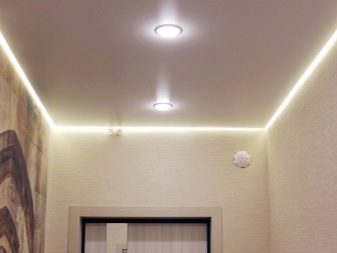
Suspended structures are made of drywall or plastic panels. Such ceilings can be made multi-level and hide all engineering communications behind them. If the ceiling is made of plastic, then it does not require further cladding. Plasterboard panels require subsequent plastering and staining.
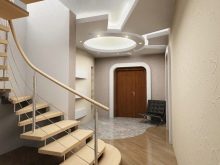
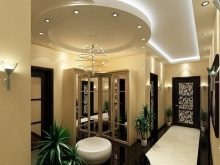
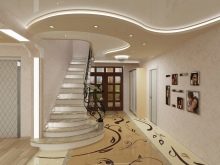
Keep in mind that such ceilings will take away from you at least 10 cm in height, because in corridors with low ceilings they will not be the best choice.
The ceiling in the hallway can be made in several ways:
- coloring;
- whitewash;
- wallpapering;
- lining with textured plaster;
- gluing a special ceiling tile.
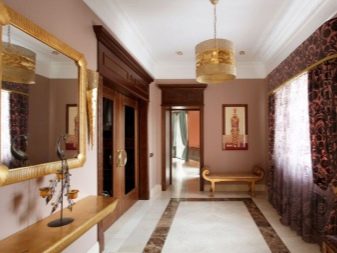
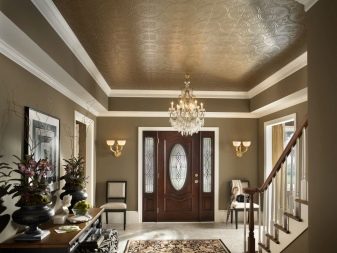
Furniture selection and placement
An important role in creating comfort in the hallway is played by its furniture. The easiest option is a headset of several storage units, where you can successfully place clothes, shoes and all the accessories necessary for daily use. Headsets made of wood are very popular.
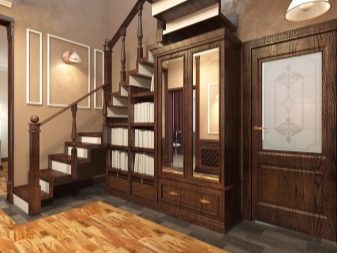
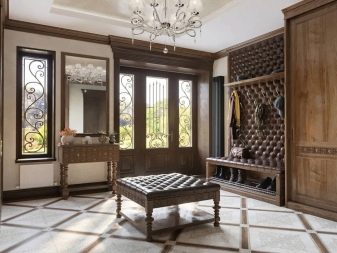
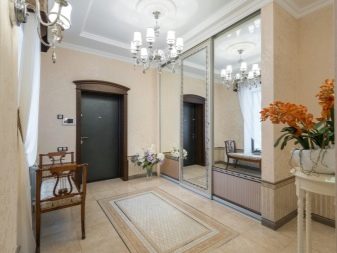
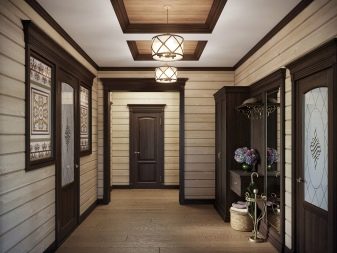
In private buildings, they look especially stylish.
The ergonomic option will be the corner modules, thanks to which you can use the space to the maximum. Seats are usually placed at the bottom of such furniture, and shoe boxes are arranged underneath. Shelves for hats, caps and hats are mounted on the upper tier.
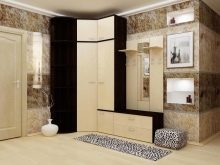

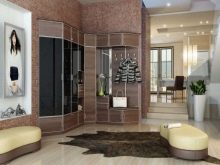
If the hallway is small and impossible to furnish it with cabinet furniture, hangers will be quite enough. It may look like a separate floor structure or panel with hooks.

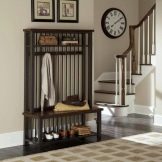
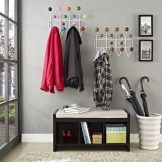

Decor
No hallway can do without a large mirror, because before leaving it is very important to make sure that the appearance is as expected. In addition to this functional load, the mirror often becomes a decorative element that adorns the hallway and makes it more stylish, airy and light.
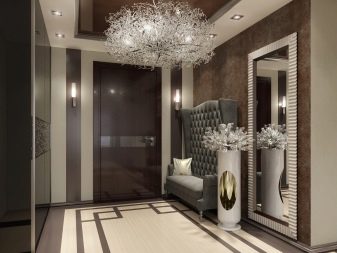
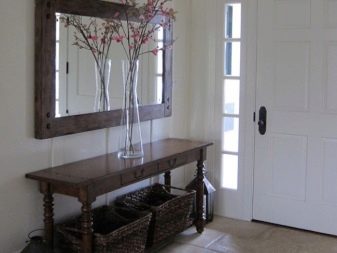
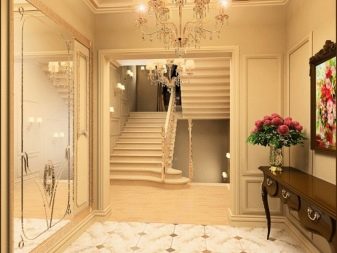
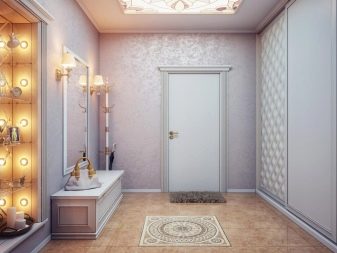
At the entrance to the house, a wicker basket or a stand for umbrellas looks spectacular. Such elements will make the room more individual and reflect the style and taste of its owner.
In private homes, hallways often abound in space, because here you can arrange a "green corner" - put pots with fresh flowers. Plants, no doubt, adorn the entrance area and enliven the interior. Alternatively, you can use compositions of artificial flowers, rounded in spirals of branches or figurines.
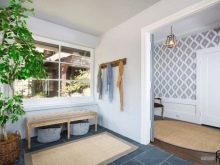
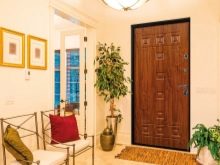
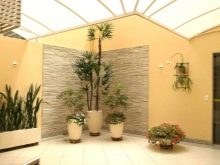
In the hallway paintings and panels on the walls, family photographs and applications always look spectacular.
Lighting
The entrance hall in private houses is often a windowless room, which is why it is so important to pay special attention to lighting to create a cozy atmosphere. It should be very bright, otherwise you simply can’t quickly find the right things and get dressed, but it’s better to avoid too intense light, since such lighting will cause significant discomfort to the eyes.
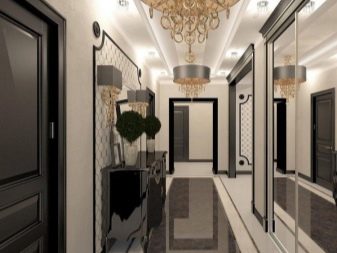
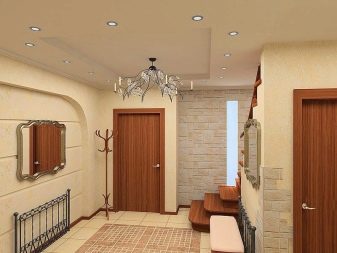
Keep in mind that the chandelier in the entrance corridor should not hang too low - it is unlikely that you will like the prospect of constantly bending down, passing under the light fixture.
With the help of a properly selected arrangement of lamps You can visually adjust the parameters of the room. So, in long and narrow corridors, point devices are mounted equidistant from each other. If the ceilings are too high, then give preference wall sconces and in order to stretch the room vertically, use parallel lighting on the floor and ceiling.
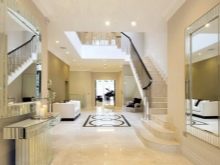
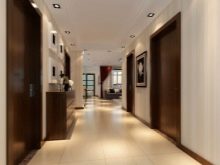
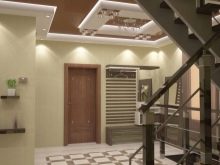
Color palette
The selection of a tint palette for the hallway largely depends on your personal preferences, but it is desirable that all the rooms of your house be decorated in the same color style. At the same time, there are no strict canons - someone likes a relaxed atmosphere, then the choice should be made in favor of light shades, and someone prefers to cheer up before leaving the house - in this case bright contrasting tones should prevail here.
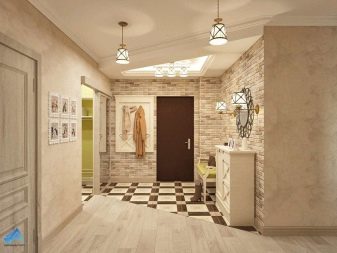
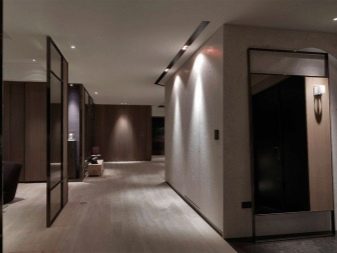
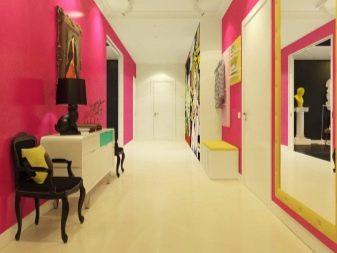

An unwritten rule applies: walls should be slightly lighter than the floor, but darker than the ceiling. This technique visually expands the space, fills it with light and lightness. The color palette must necessarily take into account the dimensions of the room, the level of illumination and furniture.
So, in small spaces, preference should be given to white and nude shades. It will be useful to trim one of the walls with materials with reflective properties. It can be glossy panels or wallpapers with a metallic effect. In order to visually raise the ceiling, you need to use a coating with vertical stripes.
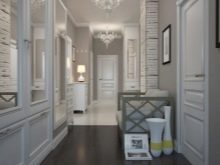
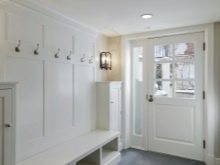
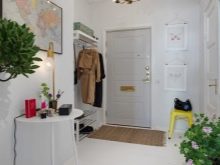
In narrow corridors, preference should be given to horizontally directed prints.
Styles
Let us dwell on the most popular.
- Art Deco - this style involves the use of expensive materials in the lining, it is characterized by the predominance of a monochrome palette with contrasting accents. Geometric patterns, expensive stucco molding and glossy facades are also welcome. Indoors, a mirror in an intricate frame, a sconce with forged decor, figurines, panels, vintage vases or ethnic elements become an obligatory attribute.
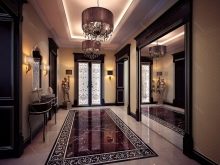
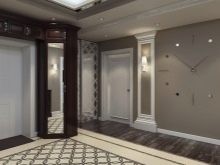
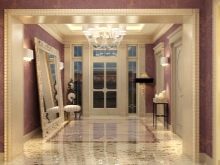
- The style is always cute and cozy. countrywhich is the best suited for private and village houses. Here, the decoration is dominated by natural materials - wood and stone, as well as fabrics. The beams on the ceiling look spectacular, and the floors are usually covered with boards with embossed texture. In this style, rough furniture is harmonious, large chests of drawers, as well as antique hangers and old benches, will be appropriate.
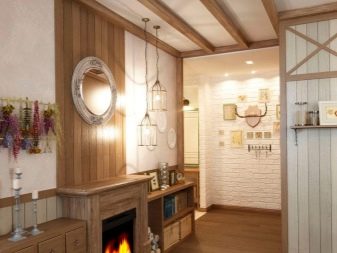
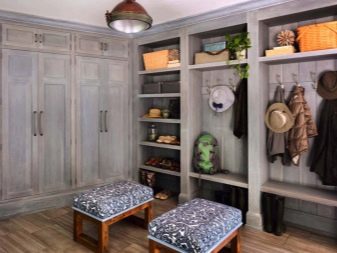
The entrance hall is always decorated with wicker baskets, wrought iron decor elements and handmade carpets.
- Lack of strict lines and asymmetry - these are the main signs Art Nouveau which has been very popular in recent years. This direction involves the use of a natural color palette, the emphasis in the room is on furniture. The simplest forms with rounded edges should prevail here, the facades are decorated with floral ornaments.
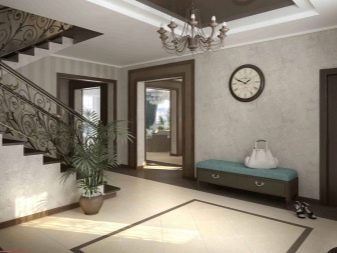
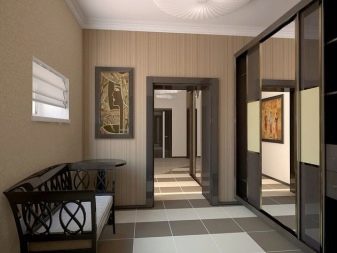
- English style - This aristocratic trend has been popular for many decades due to the harmonious combination of sophistication and simplicity of design. Stucco prevails in the design of the walls of such halls; parquet or its imitation is desirable on the floor. It is advisable to choose furniture in a dark range, the forms of the modules should be concise and strict.
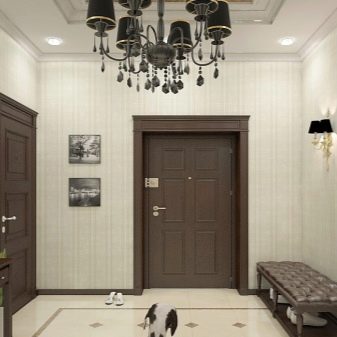

Carpets with discreet print, landscapes on the walls and stylish wall sconces to match the furniture will help to complement the style picture.
- Minimalism - This style is relevant in recent years, it involves a minimum of interior details, therefore, strict built-in furniture and laconic facades without decorative elements will be relevant here. Such solutions are optimal for lovers of cutting-edge trends; they combine well with high-tech and Scandinavian style.
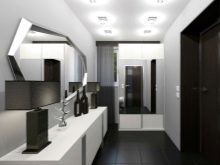
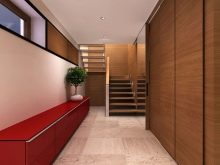
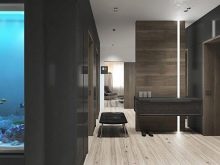
Recommendations
If you are building a house according to your project, then you will surely make the hallway the way you want to see it - bright and spacious. The owners of the houses of the previous buildings have two options - either resort to redevelopment, or use techniques that visually correct the space of a small hallway.
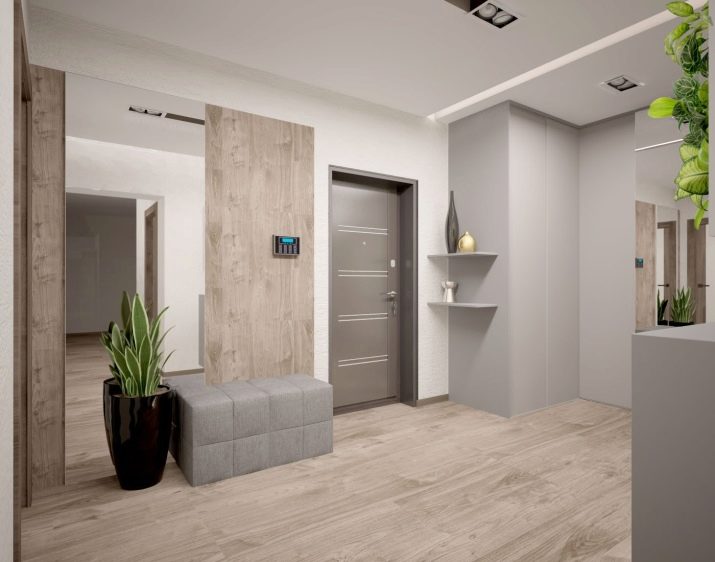
The long and narrowed entrance zone can be divided into several functional sectors - a place for changing clothes, a storage unit and, for example, a horizontal bar.
Designers recommend use mirrors for a visual increase in the area of the hallway.However, you need to be careful with them - if you hang them opposite each other, then you will feel an uncomfortable feeling of a long transition. It is advisable to place them opposite the window - in this case, the surface will reflect and illuminate the hallway, making it more interesting.

Beautiful examples
We offer you a photo selection of interesting ideas for arranging the hallway. In it you will find samples of the design of the entrance area in small and simple rooms, light and dark. Among them, each owner of a private house will be able to choose the option that will be optimal for him.
